Are you curious about the different types of igneous rocks? The most common igneous rocks are basalt, granite, and andesite. Here at rockscapes.net, we are aware of the crucial role rocks play in our daily lives, from landscape design to construction. That’s why we’ve created this in-depth guide to help you understand the fascinating world of igneous rocks.
This article explores the world of magmatic stone, covering its genesis, categorization, and common types, including granite, basalt, rhyolite, and obsidian. By the end, you’ll gain valuable insights into the properties, geological settings, and landscape design potential of these rocks. Learn about rock formations, rock identification, and their significant contribution to both natural and human environments.
1. What Are Igneous Rocks?
Igneous rocks are types of rocks formed through the cooling and solidification of magma or lava. According to Arizona State University’s School of Earth and Space Exploration, in July 2025, the composition and cooling rate of magma determine the texture and mineral composition of the resulting rock.
1.1. What’s the Difference Between Intrusive and Extrusive Igneous Rocks?
Intrusive igneous rocks crystallize beneath Earth’s surface, while extrusive igneous rocks cool above ground. Intrusive rocks, like granite, cool slowly, leading to large crystals. Extrusive rocks, like basalt, cool quickly, resulting in small crystals or volcanic glass.
 Intrusive or extrusive igneous rocks
Intrusive or extrusive igneous rocks
1.2. Where Can You Find Igneous Rocks?
Igneous rocks are found in various geological settings around the world. Basalt, for example, is the most abundant rock in Earth’s crust, primarily forming at mid-ocean ridges. Granite, on the other hand, is a major component of the continental crust and can be found in Precambrian shields and mountain belts.
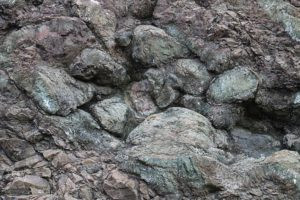 Pillow Basalt
Pillow Basalt
2. How Are Igneous Rocks Classified?
Igneous rocks are classified based on their chemical composition, mineral content, and texture. The silica (SiO2) content is a key factor. Igneous rocks range from lower-silica basalt and gabbro to higher-silica rhyolite and granite.
2.1. What Does Mafic and Felsic Mean?
Mafic rocks are rich in magnesium and iron, while felsic rocks are rich in feldspar and silica. According to research from the University of California, mafic rocks are darker and denser, whereas felsic rocks are lighter in color.
2.2. What Are Alkalic Rocks?
Alkalic rocks have high (K2O + Na2O):CaO ratios. Alkalic rocks can be either silicic or mafic, but overall, the most common alkalic rocks are silicic.
 Nepheline syenite from Brazil
Nepheline syenite from Brazil
3. What Role Do Volatiles Play in Magma?
Volatiles are gases, liquids, or vapors, such as H2O and CO2, present in magma. Volatiles can significantly influence the eruption style of a volcano, with water being particularly important in causing explosive eruptions.
3.1. What Is Vesicular Texture?
Vesicular texture is the result of gas bubbles forming in cooling lava, creating empty vesicles as the magma solidifies. Vesicular olivine basalt, found in Hawaii, is an example of this.
3.2. How Does Water Influence Volcanic Eruptions?
Water can produce large amounts of steam, leading to violent eruptions, especially for silicic magmas. The 1980 eruption of Mt. Saint Helens is a prime example of water’s explosive power.
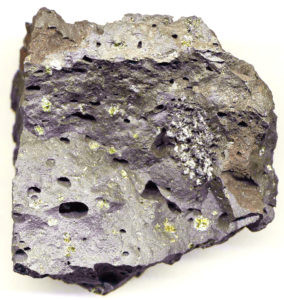 Vesicular olivine basalt from Hawaii
Vesicular olivine basalt from Hawaii
4. What Are Bowen’s Reaction Series?
Bowen’s Reaction Series describes the order in which minerals crystallize from cooling magma. It contains nine mineral names arranged in a Y-shape. According to the Geological Society of America, this model helps predict mineral formation as magma cools.
4.1. What Is the Discontinuous Side?
The discontinuous side of Bowen’s series shows abrupt changes as different minerals crystallize in sequence. Minerals on this side change composition as cooling proceeds, with olivine having a greater magnesium to iron ratio (Mg:Fe) at higher temperatures.
4.2. What Is the Continuous Side?
The continuous side represents plagioclase, which is continually present during crystallization, starting as Ca-rich plagioclase at high temperature and changing to Na-rich plagioclase as cooling progresses.
 Bowen’s Reaction Series
Bowen’s Reaction Series
5. What Happens When Disequilibrium Occurs During Crystallization?
Disequilibrium can occur when mineral crystals and magmas do not remain in equilibrium during crystallization. The first crystals that form may become separated from the rest of the magma, creating an evolved magma.
5.1. What Is a Cumulate?
A cumulate is a layer formed when early crystals settle to the bottom of the magma chamber. This process changes the magma composition, leading to fractional crystallization.
5.2. How Do Zoned Crystals Form?
Zoned crystals form when large mineral grains do not remain in equilibrium with surrounding magma. Different zones have different compositions, resulting in visible or microscopic variations.
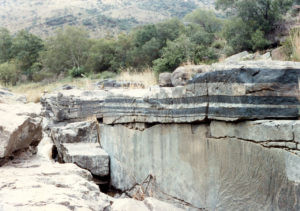 Chromite cumulates in the Bushveld Complex, South Africa
Chromite cumulates in the Bushveld Complex, South Africa
6. What Are the Most Common Silicate Minerals in Igneous Rocks?
Silicate minerals dominate igneous rocks because silicon and oxygen are the most abundant elements in magmas. Common silicate minerals include quartz, feldspars, micas, pyroxenes, amphiboles, and olivine.
6.1. What Are SiO2 Polymorphs?
SiO2 polymorphs are minerals with the same chemical composition but different crystal structures. Common polymorphs include quartz, cristobalite, tridymite, coesite, and stishovite.
 The atomic arrangement in cristobalite
The atomic arrangement in cristobalite
6.2. What Are Feldspars?
Feldspars are the most abundant minerals in Earth’s crust. They are solid-solution minerals with the general formula (Ca,Na,K)(Si,Al)4O8, including albite, anorthite, and orthoclase.
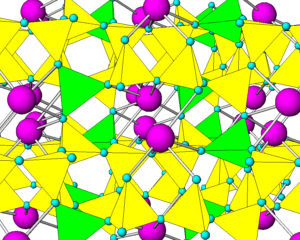 The arrangement of atoms in feldspar
The arrangement of atoms in feldspar
6.3. What Are Feldspathoids?
Feldspathoids are framework silicates similar to feldspars, but much less common. Examples include analcime, leucite, nepheline, and sodalite.
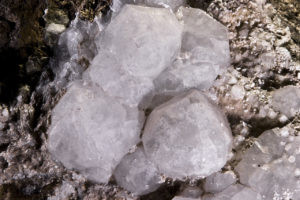 Analcime from Martinique
Analcime from Martinique
6.4. What Are Micas?
Micas are sheet silicate minerals with a layered atomic arrangement. Common micas include muscovite and biotite, known for their perfect basal cleavage.
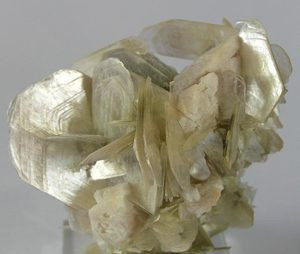 Muscovite mass from Brazil
Muscovite mass from Brazil
6.5. What Are Chain Silicates?
Chain silicates feature tetrahedra that polymerize to form chains. Pyroxenes (single-chain) and amphiboles (double-chain) are the most important groups of minerals in the chain silicate subclass.
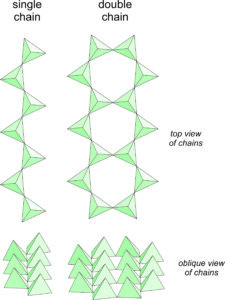 Single and double chain silicates
Single and double chain silicates
6.6. What Are Pyroxenes?
Pyroxenes are single-chain silicate minerals with the general formula (Ca,Na,Mg,Fe)(Mg,Fe,Al)(Si,Al)2O6. Common pyroxenes include diopside, hedenbergite, enstatite, and ferrosilite.
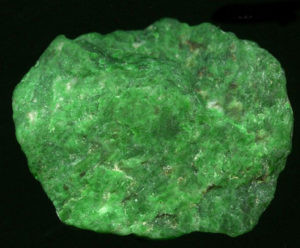 Jadeite from California
Jadeite from California
6.7. What Are Amphiboles?
Amphiboles are double-chain silicate minerals closely related to pyroxenes. Common amphiboles include tremolite, ferroactinolite, hornblende, and glaucophane.
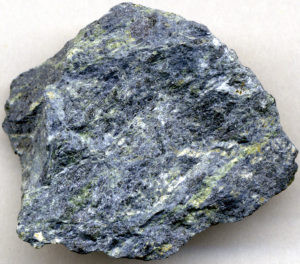 Glaucophane with minor omphacite
Glaucophane with minor omphacite
6.8. What Are Ring Silicates and Paired Tetrahedral Silicates?
Ring silicates, like beryl and tourmaline, contain rings of silicon tetrahedra. Paired tetrahedral silicates, like epidote and zoisite, contain linked pairs of silicon tetrahedra.
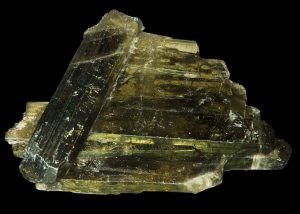 Epidote from Prince of Wales Island, Alaska
Epidote from Prince of Wales Island, Alaska
6.9. What Are Olivine Group Minerals?
Olivine group minerals, belonging to the isolated tetrahedra silicate subclass, all have similar atomic arrangements. By far, the most important mineral of this group is called olivine.
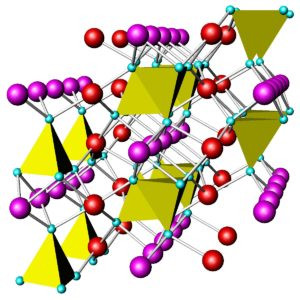 The atomic arrangement in olivine
The atomic arrangement in olivine
7. How Do Geologists Name Igneous Rocks?
Geologists name igneous rocks based on their mineralogy and texture. The International Union of Geological Sciences (IUGS) provides a widely used classification scheme.
7.1. What Is the IUGS System for Plutonic Rocks?
The IUGS system for plutonic rocks classifies igneous rocks based on the relative amounts of quartz, plagioclase, and alkali feldspar present. This system is convenient because these minerals can often be identified in the field.
7.2. What Is the TAS System for Volcanic Rocks?
The total-alkali-silica (TAS) system is used to name volcanic rocks based on their alkali and silica content. This is because volcanic rocks may be very fine-grained or contain significant amounts of volcanic glass.
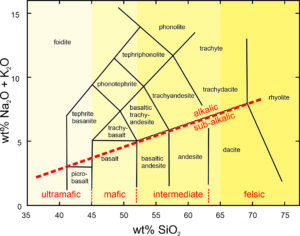 The TAS System for naming volcanic rocks
The TAS System for naming volcanic rocks
8. What Are Mineral Modes?
Mineral modes refer to the typical amounts by volume of minerals in igneous rocks. Common minerals include K-feldspar, quartz, plagioclase, pyroxene, olivine, muscovite, biotite, and amphibole.
8.1. How Are Mineral Modes Distributed in Plutonic Rocks?
Figure 6.101 depicts the typical amounts by volume – also called the mineral modes – of these eight minerals in some common plutonic rocks. Volcanic rock names are included in the table, but many volcanic rocks contain glass that replaces some or all of the minerals that could be present.
8.2. How Are Mineral Modes Distributed in Silicic Rocks?
Silicic to intermediate rocks always contain K-feldspar and quartz and are likely to contain hydrous minerals such as muscovite or biotite. They may contain Na-rich plagioclase. The most common mafic rocks contain pyroxenes and Ca-rich plagioclase.
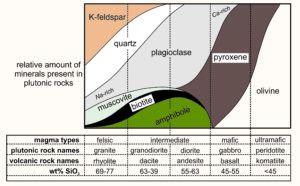 Mineral modes of some common igneous rocks
Mineral modes of some common igneous rocks
9. What Are Common Types of Igneous Rocks?
Igneous rocks vary greatly in mineralogy and texture. The main difference between gabbro and diorite is that gabbro, which is a mafic rock, contains calcium-rich plagioclase. The major elements in all igneous rocks are the same, and they typically contain feldspar or quartz.
9.1. What Are Silicic Igneous Rocks?
Silicic igneous rocks include granite, granodiorite, and tonalite (plutonic) and rhyolite, dacite, and quartz andesite (volcanic). They contain >20% quartz and are named based on the amounts of K-feldspar and plagioclase they present.
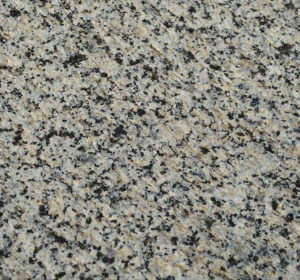 Granite
Granite
9.2. What Are Mafic and Intermediate Igneous Rocks?
Mafic rocks contain less than 5% quartz and include syenite, monzonite, and gabbro (plutonic) and trachyte, latite, and basalt (volcanic). Intermediate igneous rocks contain 5% to 20% quartz.
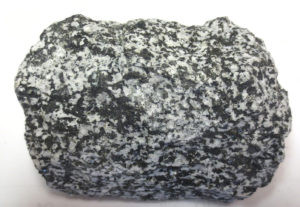 Diorite from Massachusetts
Diorite from Massachusetts
9.3. What Are Ultramafic Igneous Rocks?
Ultramafic rocks are especially poor in SiO2 and have high Mg:Fe ratios. Dominant minerals include pyroxene, olivine, and plagioclase. Peridotite is an olivine-rich ultramafic rock.
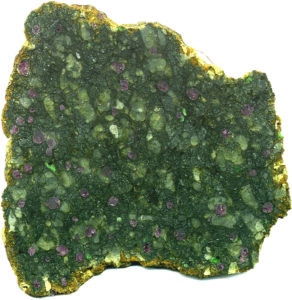 Garnet lherzolite from South Africa
Garnet lherzolite from South Africa
10. FAQ About Igneous Rocks
Still have questions about igneous rocks? Here are some frequently asked questions to help clarify any lingering confusion:
10.1. What Is the Most Common Igneous Rock?
Basalt is the most common igneous rock on Earth, forming the majority of the oceanic crust.
10.2. How Can You Identify an Igneous Rock?
Identify an igneous rock by observing its texture, color, and mineral composition. Use a rock identification key or consult with a geologist for accurate identification.
10.3. Where Do Igneous Rocks Form?
Igneous rocks form at volcanoes, mid-ocean ridges, and deep within the Earth’s crust.
10.4. What Are the Uses of Igneous Rocks?
Igneous rocks are used in construction, landscaping, and as sources of valuable minerals. Granite, for example, is often used for countertops and building facades.
10.5. What Causes Different Colors in Igneous Rocks?
Different colors in igneous rocks are caused by varying mineral compositions. Darker colors indicate mafic minerals, while lighter colors indicate felsic minerals.
10.6. What Is a Porphyritic Texture?
Porphyritic texture refers to an igneous rock with large crystals (phenocrysts) embedded in a fine-grained matrix (groundmass), indicating different cooling rates.
10.7. How Does the Cooling Rate Affect Crystal Size?
Slow cooling rates result in larger crystals, while fast cooling rates result in smaller crystals or volcanic glass.
10.8. What Is the Difference Between Lava and Magma?
Lava is molten rock that erupts onto the Earth’s surface, while magma is molten rock beneath the Earth’s surface.
10.9. Can Igneous Rocks Turn Into Other Types of Rocks?
Yes, igneous rocks can undergo weathering, erosion, and metamorphism to form sedimentary or metamorphic rocks.
10.10. What Is the Significance of Igneous Rocks in Geology?
Igneous rocks provide insights into Earth’s internal processes, volcanic activity, and the composition of the mantle and crust.
Understanding the nature and formation of igneous rocks is essential for anyone interested in geology, landscape design, or the natural world. Whether you are a homeowner planning a garden, a designer seeking unique materials, or simply curious about the Earth beneath our feet, exploring igneous rocks offers endless opportunities for creativity and learning.
Ready to incorporate the timeless beauty and durability of igneous rocks into your next landscaping project? Visit rockscapes.net for a wide selection of high-quality materials, expert advice, and innovative design ideas. Let us help you bring your vision to life!
Address: 1151 S Forest Ave, Tempe, AZ 85281, United States
Phone: +1 (480) 965-9011
Website: rockscapes.net
